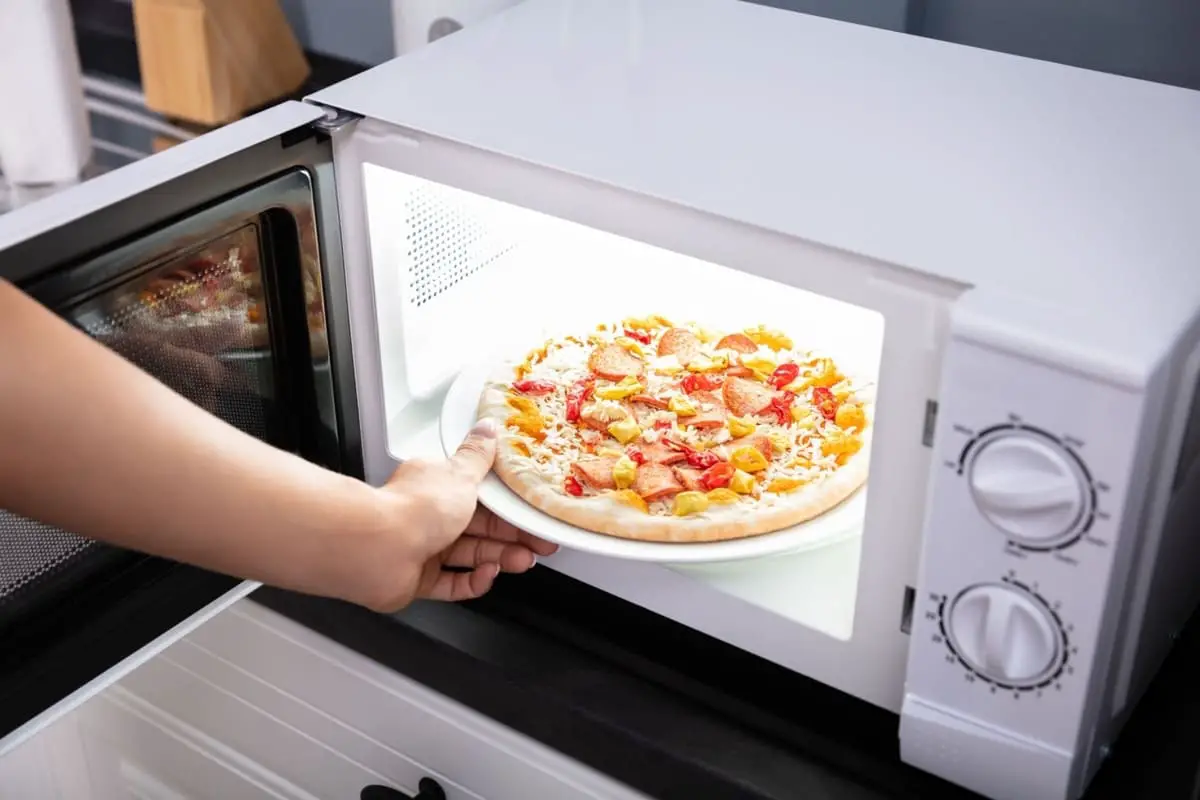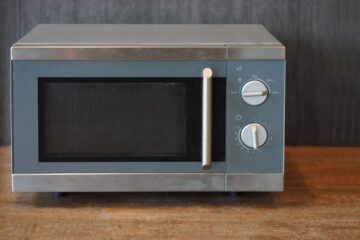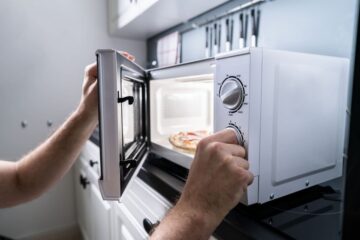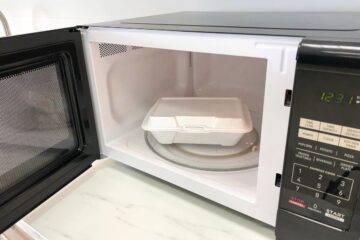Microwave ovens are an essential part of our kitchens, and they have made our lives much more comfortable. However, a squeaky microwave can be an annoying and frustrating experience, especially if you use it frequently. In this guide, we will take a closer look at the possible causes of a squeaky microwave and how to fix the issue.
Why Your Microwave is Squeaking
Before we dive into the methods to fix a squeaky microwave, it is essential to understand the possible causes of the problem. Here are some of the most common reasons why your microwave might be making noise:
- Loose Screws: The screws that hold the various parts of the microwave in place can loosen over time due to frequent use or vibrations. Loose screws can cause different parts of the microwave to rub against each other, resulting in a squeaky sound.
- Worn-Out Turntable Support: The turntable support is the mechanism that allows the turntable to rotate smoothly. If this part wears out, it can cause the turntable to wobble or produce a squeaking sound.
- Lack of Lubrication: Like any other machine, a microwave requires lubrication to keep its moving parts running smoothly. If there is not enough lubrication, it can cause friction between the parts, resulting in a squeaky sound.
- Damaged or Worn-Out Parts: Any damaged or worn-out part in the microwave can cause it to make noise. The damaged part may be causing friction against other parts, leading to the squeaky sound.
Tools Needed to Fix a Squeaky Microwave Oven
To fix a squeaky microwave, you will need some essential tools. Here are the tools you will need to have:
- Screwdriver: You will need a screwdriver to tighten loose screws or remove screws to access different parts of the microwave.
- Lubricant: You will need a lubricant to apply to the moving parts of the microwave to reduce friction.
- Replacement Parts: Depending on the issue, you may need to replace some parts of the microwave. Make sure you have the correct replacement parts before you begin the repair process.
Optional but helpful tools to have:
- Pliers: Pliers can be helpful when tightening screws or removing small parts.
- Wrench: If the screws are tight, you may need a wrench to loosen them.
How to Fix a Squeaky Microwave Oven?
Now that we have looked at the possible causes and tools required to fix a squeaky microwave let’s dive into the step-by-step process for fixing the issue.
Method 1: Tightening Loose Screws
Tightening loose screws is one of the easiest and most common ways to fix a squeaky microwave. Here’s how you can do it:
- Identify and Access the Screws: Identify the screws that are causing the squeaking sound and access them. The screws are usually located at the bottom of the microwave or behind the control panel.
- The Right Tools to Use: Use a screwdriver or pliers to tighten the screws. Make sure you are using the correct size of the screwdriver to avoid damaging the screw head.
- Tips for Tightening the Screws Correctly: Tighten the screws slowly and gradually to avoid overtightening them. Over-tightening can cause the screws to strip, making them difficult to remove in the future.
Method 2: Replacing Worn-Out Turntable Support
The turntable support is the component that holds the glass plate in place and allows it to rotate. Over time, the turntable support can become worn-out, causing it to make a squeaking noise. In this case, the best solution is to replace the turntable support.
To replace the turntable support, you will need to remove the glass plate and locate the turntable support. The turntable support is usually held in place by a retainer clip or screw. Once you have located the retainer clip or screw, remove it and then lift the turntable support out of the microwave.
To install the new turntable support, simply place it into position and secure it with the retainer clip or screw. Once the new turntable support is in place, replace the glass plate and test the microwave to make sure the squeaking noise has been resolved.
Method 3: Lubricating Moving Parts
If tightening the screws and replacing the turntable support does not solve the problem, the issue may be caused by moving parts that require lubrication. Lubricating the moving parts can help reduce friction and eliminate the squeaking noise.
To lubricate the moving parts, you will need to first identify the parts that require lubrication. The most common parts that require lubrication include the turntable support and the drive bushing.
When lubricating the turntable support, use a silicone-based lubricant. Apply a small amount of lubricant to the turntable support and use a paper towel to spread it evenly. Be careful not to apply too much lubricant, as it can attract dust and debris.
When lubricating the drive bushing, use a light machine oil, such as 3-in-1 oil. Apply a small amount of oil to the drive bushing and use a paper towel to spread it evenly.
In addition to the turntable support and the drive bushing, there may be other areas of the microwave that require lubrication. Refer to the owner’s manual for specific instructions on where to apply lubricant.
Method 4: Adjusting the Drive Bushing
If the squeaking noise persists after lubricating the moving parts, the issue may be caused by a misaligned drive bushing. The drive bushing is the component that connects the motor to the turntable.
To adjust the drive bushing, you will need to first locate it. The drive bushing is usually located underneath the microwave. You may need to remove the bottom panel of the microwave to access it.
Once you have located the drive bushing, use a wrench to loosen the locking nut. Then, use a screwdriver to turn the adjustment screw clockwise or counterclockwise, depending on the direction in which the bushing needs to be moved. Once the bushing is properly aligned, tighten the locking nut.
If you are not comfortable adjusting the drive bushing yourself, it is best to call in a professional. Adjusting the drive bushing incorrectly can cause damage to the microwave and may even be dangerous.
Method 5: Replacing Damaged or Worn-Out Parts
If none of the previous methods work, it’s possible that the problem lies with a damaged or worn-out part in your microwave. Common parts that can cause a squeaky noise include the drive motor, the turntable motor, and the fan motor.
Identifying damaged or worn-out parts can be challenging, especially if you’re not familiar with the inner workings of a microwave. In such cases, it’s best to consult the manufacturer’s manual or a professional technician.
If you’re confident that you can identify the faulty part, the next step is to find a replacement. The easiest way to do this is to refer to your microwave’s manual or contact the manufacturer directly. They should be able to provide you with the correct replacement part number.
Once you have the replacement part, the process of replacing it will depend on the specific part and your microwave model. However, most replacement procedures involve disassembling the microwave and replacing the part in question.
It’s essential to follow the manufacturer’s instructions carefully during the replacement process. If you’re unsure about any step, it’s best to consult a professional technician.
Preventing Future Microwave Squeaks
Prevention is always better than cure, and this holds true for microwave squeaks as well. Here are some tips for keeping your microwave running smoothly and reducing the likelihood of squeaks:
- Clean your microwave regularly: Dirt and debris can accumulate in your microwave over time and cause moving parts to squeak. Clean your microwave regularly to prevent this from happening.
- Use your microwave properly: Avoid slamming the microwave door shut or placing heavy items on the turntable. This can cause unnecessary wear and tear on your microwave’s parts.
- Keep your microwave well-maintained: Regular maintenance, such as lubricating moving parts, can help prevent future squeaks. Refer to your microwave’s manual for maintenance recommendations.
- Avoid overusing your microwave: Overusing your microwave can cause it to overheat and put undue stress on its parts. Use your microwave only as needed and allow it to cool down between uses.
When to Call in a Professional?
If you’ve tried all the methods above and your microwave is still squeaking, it’s time to call in a professional technician. Here are some signs that you need to hire a professional:
- Your microwave is making unusual noises other than squeaks
- Your microwave is not heating food properly
- Your microwave is emitting strange smells or smoke
- Your microwave’s buttons or display are not working correctly
Choosing the right repair technician is essential to ensure that your microwave is repaired correctly and safely. Look for technicians with experience in repairing microwaves and check their references and reviews.
Before hiring a professional, ask them these questions:
- What is your experience repairing microwaves?
- What is your pricing structure?
- Do you offer a warranty for your repairs?
- How long will the repair take?
- What safety measures do you take during repairs?
Conclusion
A squeaky microwave oven can be a nuisance, but fortunately, it’s usually a straightforward fix. By identifying the cause of the squeak and following the steps outlined in this guide, you can fix your squeaky microwave quickly and easily.
Remember to follow safety precautions when working with your microwave and always consult a professional if you’re unsure about any step. By taking care of your microwave and performing regular maintenance, you can keep it running smoothly and prevent future squeaks.



